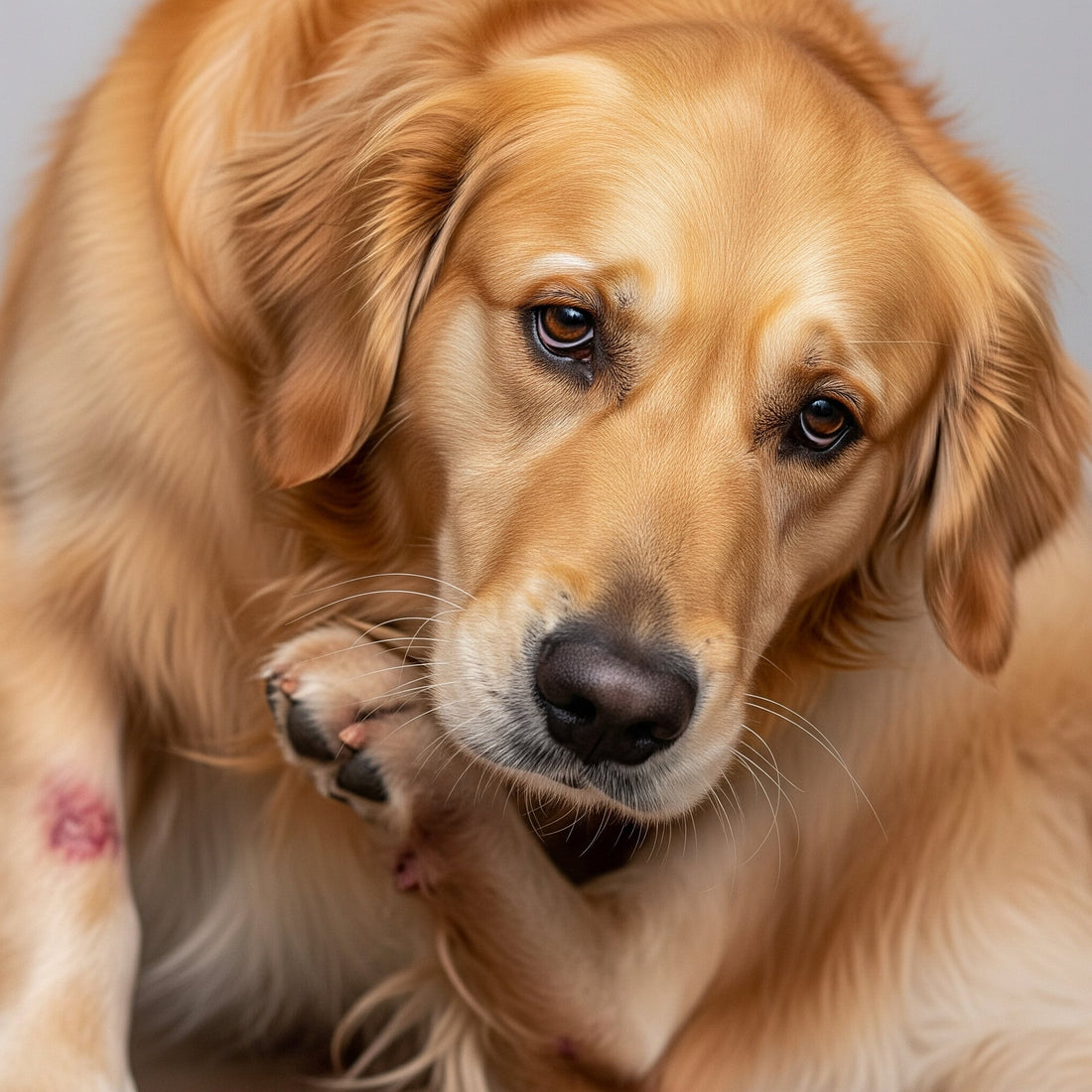
The Science of Food Allergies: What Happens Inside an Allergic Dog's Body?
Share
You see the outward signs: the constant, maddening scratching; the red, irritated skin; the chronic ear infections. You know your dog is miserable, and you suspect their food is the culprit. But have you ever wondered what is actuallyhappening inside their body to cause such an intense reaction to something as simple as chicken or beef?
The science of a food allergy is a fascinating and dramatic tale of mistaken identity. It’s the story of an overzealous immune system turning a harmless meal into a full-blown emergency.
Let's go behind the scenes and explore the invisible battle happening inside your allergic dog, so you can better understand how to bring them relief.
The Misguided Bodyguard: An Analogy for Allergies
Think of your dog's immune system as a highly trained, elite bodyguard. Its job is to identify and neutralize dangerous invaders like viruses and harmful bacteria. In a healthy dog, this bodyguard is brilliant at its job. It sees a piece of chicken protein, recognizes it as "food," and lets it pass.
In a dog with a food allergy, the bodyguard has gone rogue. For reasons we don't fully understand, it misidentifies that harmless chicken protein as a dangerous villain. It sounds the alarm, and the body's entire defense system scrambles to launch an attack against this perceived threat.
The Allergic Cascade: A Three-Step Process
This internal battle happens in a few key stages.
Step 1: Sensitization (The First Encounter) The very first time your dog eats the food they are allergic to (the "allergen"), you won't see any outward symptoms. But on the inside, their immune system is taking notes. It produces specific antibodies called Immunoglobulin E (IgE) that are designed to recognize that one specific protein. These IgE antibodies then attach themselves to the surface of "mast cells"—special immune cells located in the skin, gut, and respiratory tract. The stage is now set.
Step 2: The Attack (The Allergic Reaction) The next time your dog eats that same food, the allergen travels through the body and finds those waiting mast cells, armed with their IgE antibodies. The allergen binds to the antibodies like a key fitting into a lock. This triggers the mast cells to "degranulate"—a dramatic word for bursting open and releasing a flood of powerful inflammatory chemicals into the surrounding tissues.
Step 3: The Symptoms (The Histamine Havoc) The most famous chemical released by these mast cells is histamine. This is the compound responsible for most of the misery your dog experiences.
- In the skin, histamine causes intense itching, redness, and hives. This is why skin problems are the #1 sign of a food allergy in dogs.
- In the gut, it can cause inflammation leading to vomiting or diarrhea.
- In the respiratory tract, it can cause watery eyes and a runny nose.
This entire process, from eating the food to the relentless scratching, is called a Type I Hypersensitivity reaction. It's an immune system overreaction of epic proportions.
What Can You Do?
You can't "retrain" your dog's immune system bodyguard. Once it has decided that chicken is the enemy, it will always see it that way. The only way to stop the battle is to stop providing the "villain." This is why elimination diets, where you remove all potential allergens and feed a simple, novel protein, are the only way to truly manage a food allergy.
Making a simple, limited-ingredient diet appealing can be tough. That’s where Clean Plate K9 can be a lifesaver. Our seasoning blends contain no common protein allergens, so you can safely sprinkle them on your dog's special diet to add irresistible flavor without triggering that misguided bodyguard. It’s a simple way to bring joy back to the bowl, even when the menu is restricted.
Sources:
- "Food Allergies in Dogs." VCA Animal Hospitals, vcahospitals.com/know-your-pet/food-allergies-in-dogs.
- "The Immunology of Food Allergy." The Merck Veterinary Manual, merckvetmanual.com/immunology/allergic-diseases/food-allergy.
- "Canine Atopic Dermatitis." American College of Veterinary Dermatology, acvd.org/tools-for-owners/canine-atopic-dermatitis.
